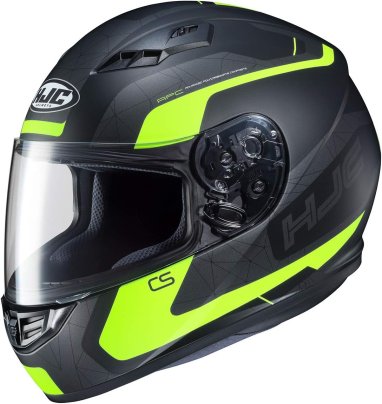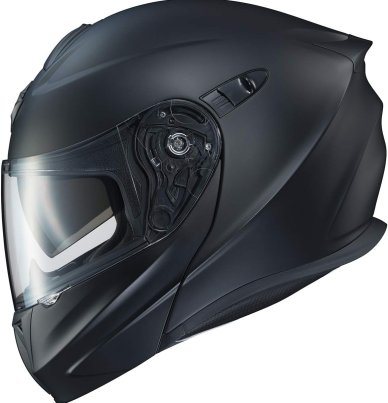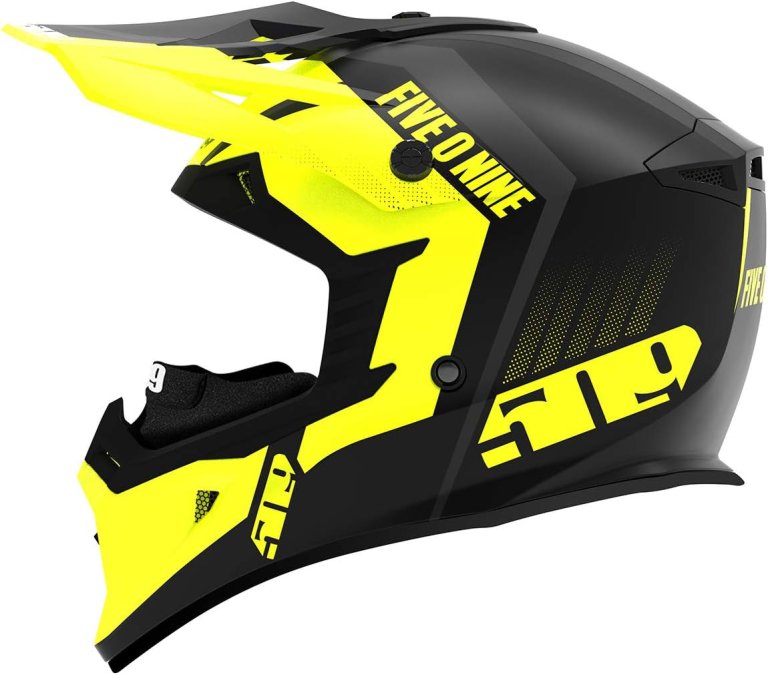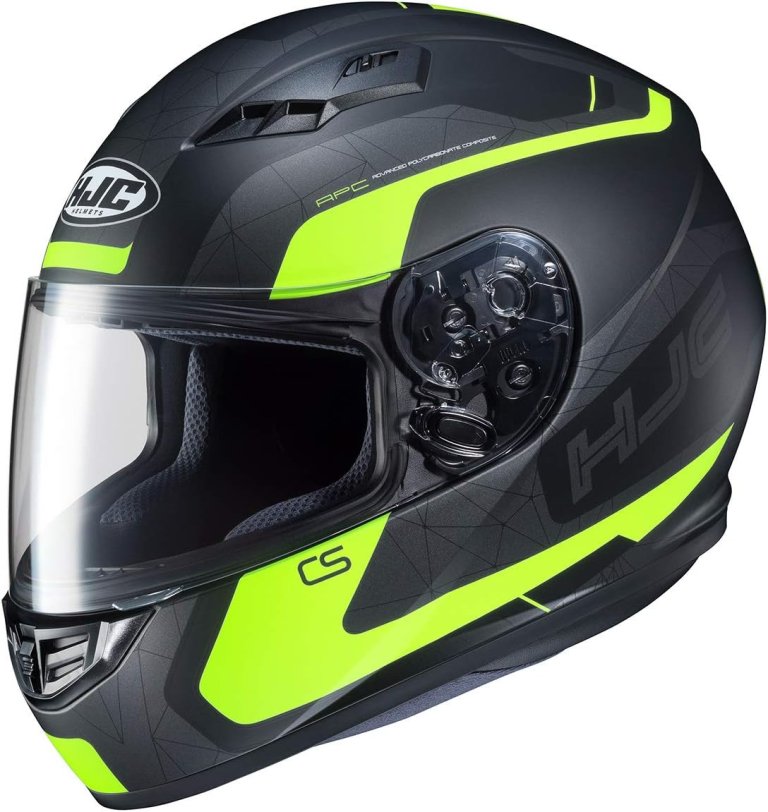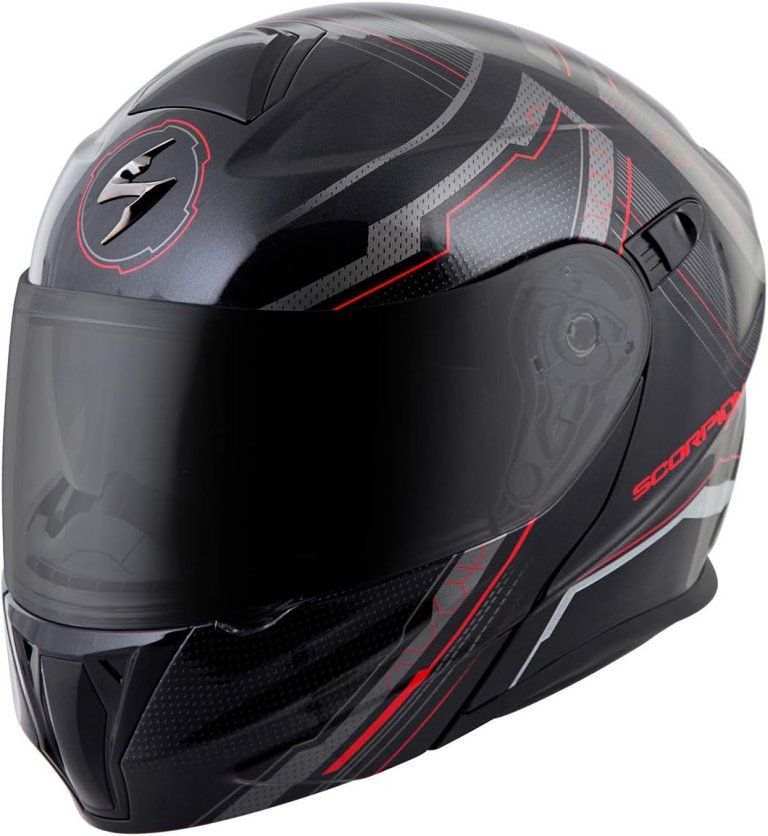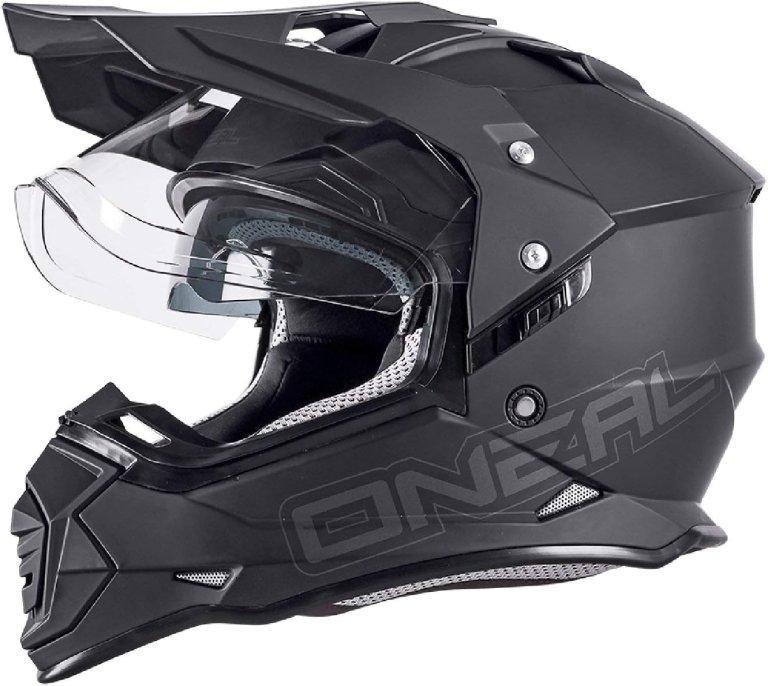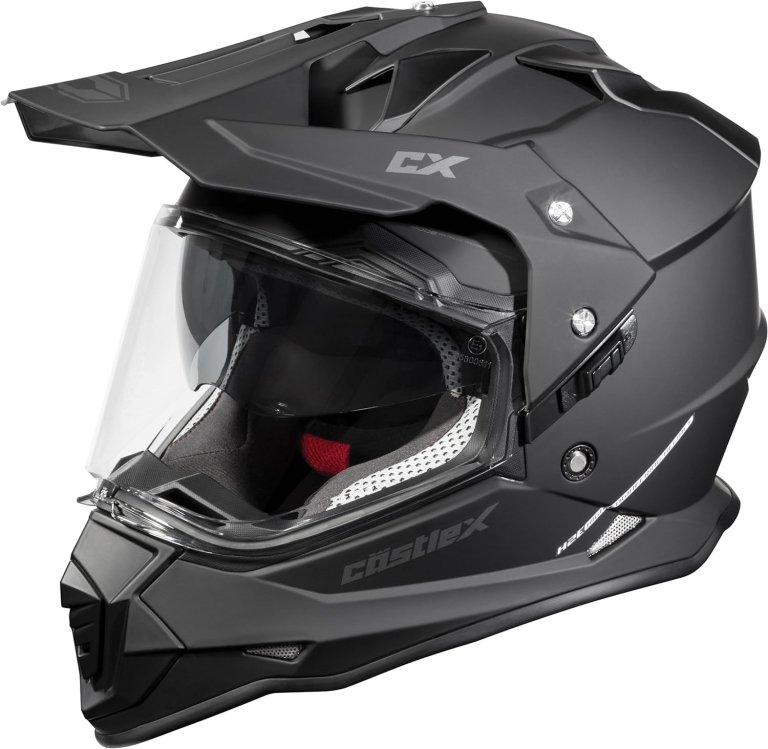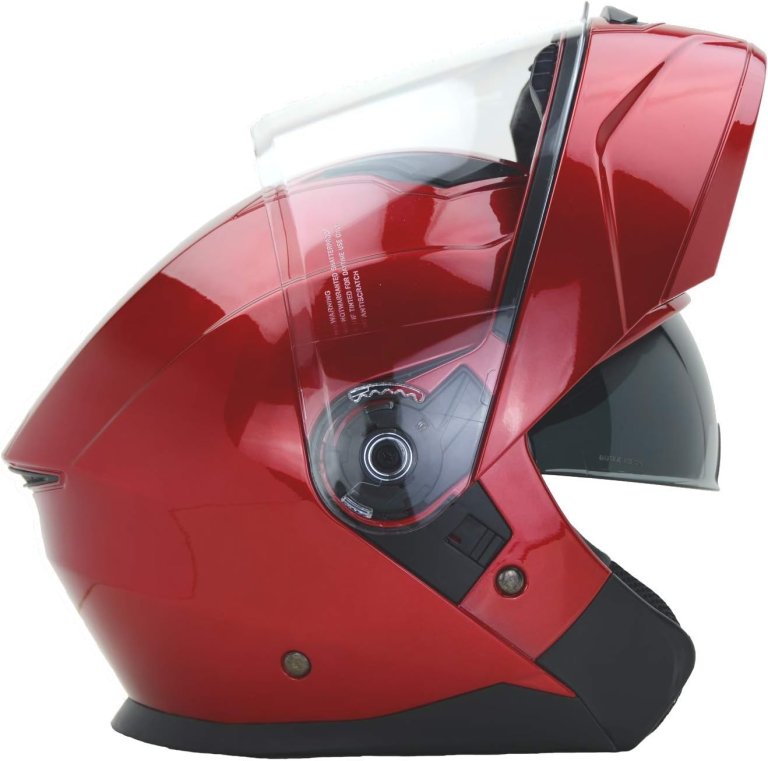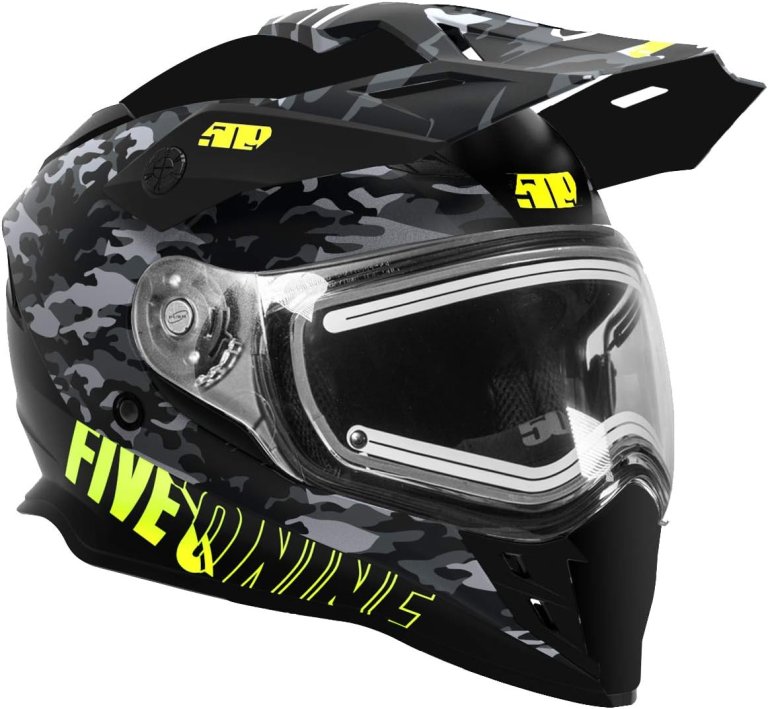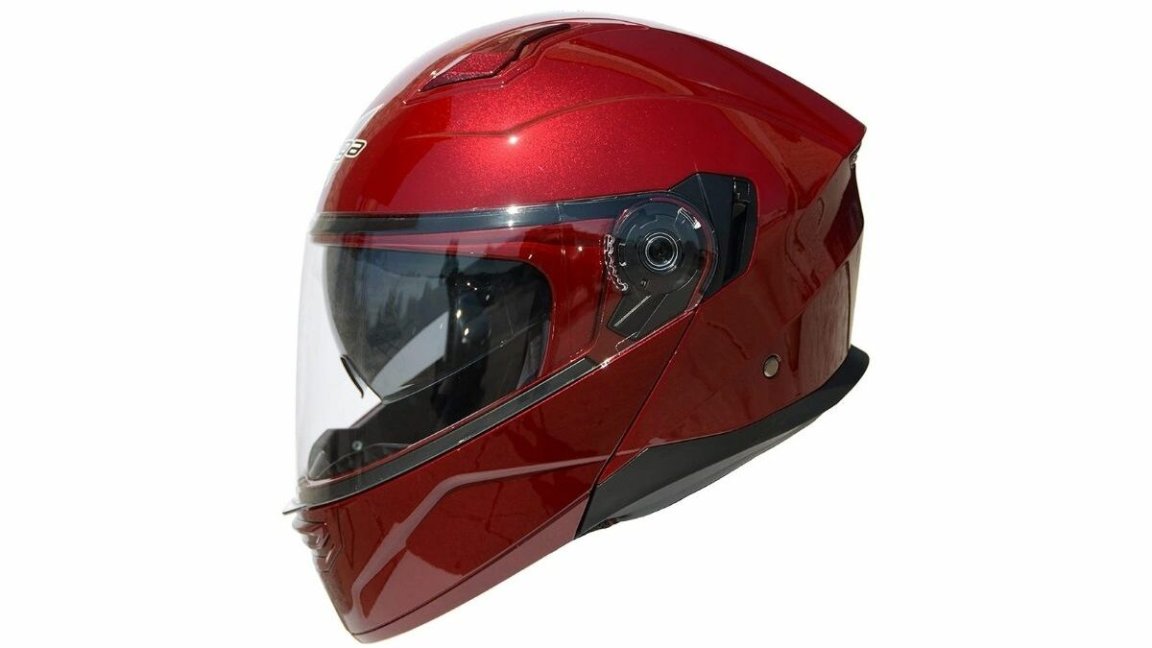
Those of us who are avid snowmobilers know the value and importance of having a durable and warm helmet for winter riding. While snowmobile helmets and motorcycle helmets look the same and have the same essential function, which is to protect your head and face in an unfortunate impact, there are a few key differences that set them apart.
Snowmobile helmets are specifically designed for cold-weather riding, whereas most motorcycle helmets are not. This includes dual-paned face shields, some of which are even heated, and the addition of a breath deflector, or breath box as it is sometimes called, that directs condensation and humidity away from your goggles and face shield so that you’re not constantly having to pull over to defog your field of vision. Some motorcycle helmet manufacturers do offer these accessories as add-ons so that you can convert your warm-weather motorcycle helmet to work as a cold-weather option. However, most of the time, it’s just easier to buy a separate helmet that is specifically designed for snowmobiling. Take a look at our informative review and buying guide to help you figure out which is the best helmet for you.
Benefits of Snowmobile Helmets
- Safety. Arguably, the most important benefit of a snowmobile helmet, and any helmet, is to provide protection for your head and face in case of damaging impacts or accidents.
- Protection from weather elements. Snowmobile helmets also protect your head and face from frigid temperatures and the risk of hypothermia. They keep your head and hair dry in rain and snow and also protect you from sun damage on bright days.
- Decreased wind noise. Not only do helmets protect your ears from exposure to strong winds as you ride, but they can also protect your eyes and face from the sting of strong winds coming directly at you.
- Protects your vision. Helmets help to protect your vision and face from airborne debris, like leaves, snow, ice, flying rocks, twigs, and branches.
Check out our favorite ATV helmets here.
Types of Snowmobile Helmets
Full-Face Helmets
This type of helmet covers your entire head and face with very few if any moving parts or accessories. It offers the most protection from cold temperatures and impacts, has very low wind noise and excellent buffering. This type of helmet also provides a lot of warmth, so be sure to look for one that has good ventilation that won’t have you sweating like crazy during your rides.
Modular Helmets
This type of helmet is very similar to the full-face helmet. Its main difference is that you can lift the chin bar while you’re stopped. This gives you quick and easy access to your face. While the addition of these moving parts to the helmet does decrease its overall level of protection, the difference between this type of helmet and the full-face type is minimal.
Snocross Helmets
Just like motocross helmets, the snocross type of helmet is designed for more competitive and active snowmobilers. In place of a full face shield, you can use independent and separate goggles, which allow you a greater field of vision, since the goggles sit directly on your face. This type of helmet also offers significantly more ventilation than other types of helmets that help to wick away the higher levels of perspiration and humidity that competitive riders experience. The ultra-aerodynamic shape of this type of helmet also provides better wind buffeting at high speeds.
Dual Sport Helmets
This type of helmet is more of a cross between the full-face model and the snocross helmet. It’s ideal for riders who love the aerodynamic and aggressive look of the snocross helmet, but instead of goggles, prefer a face shield, which is easier to use and maintain than goggles. The shape of this helmet allows for a wide field of vision and also provides good ventilation.
In the market for some motorcycle racing boots? Learn about our top picks here.
Top Brands
509
Started in Spokane, Wash. in 2004, 509 was acquired by Polaris in 2016. It manufactures top-quality helmets, such as the Altitude 2.0 Helmet, the Tactical Off-Road Helmet, and outerwear and accessories for riders.
HJC
HJC has been manufacturing motorcycle helmets since 1971. It’s one of the only companies that houses its wind tunnel testing facility. Some of its more popular models include the i90 Modular Helmet and the CL-Y Full Face Snow Helmet.
Scorpion Exo
Scorpion Exo is a China-based helmet manufacturer that focuses on producing high-quality helmets at competitive prices. It has a global reach, with offices throughout the world, and is well-known for producing helmets and apparel, like the EXO-AT950 Modular Helmet and the EXO-AT950 Dual Pane Snow Helmet.
Snowmobile Helmet Pricing
- Under $150: This is a great price range for a beginner level or occasional snowmobiler to find a helmet. These helmets offer protection from the elements without a lot of bells and whistles but are still DOT approved for safety, so you can be sure you’re getting a good quality product.
- $150-$300: This is the price range in which the majority of well-designed and good quality snowmobile helmets can be found. Made with durable, lightweight, and rugged materials, you will find all types of snowmobile helmets in this price range.
- $300 and up: This price range is where the top-of-the-line, most technologically advanced snowmobile helmets live. Here, you will find helmets for the serious rider, with heated face shields, premium construction materials, and awesome designs.
Check out these awesome motorcycle helmet speakers.
Key Features
High-Quality Construction Materials
One of the most important features in a reliable and dependable snowmobile helmet is the use of high-quality construction materials that will withstand a significant amount of wear and tear and will keep you protected. Outer shells made from dent-proof and shatter-resistant polycarbonate or ABS plastic are a must. Inner liners that are fully removable for washing and provide moisture-wicking and good airflow properties are of equal importance in ensuring a comfortable fit and enjoyable ride.
Safety Certification
When selecting a top-notch snowmobile helmet that won’t let you down, be sure to look for various safety ratings, like DOT certification, which should be the bare minimum safety standard as set forth by the Federal Department of Transportation. Also look for Snell and ECE certifications, which set a slightly higher standard and guarantee the utmost in head protection.
Proper Fit
Finding a helmet that fits you properly is essential to not only giving you a comfortable and enjoyable ride, but also the safest ride possible. A helmet that is too big for you will cause neck strain and may run the risk of coming off or not providing enough cushioning in an accident. If you’re ordering online, be sure to check the manufacturer’s sizing chart and measure carefully before purchase. It also helps to read user reviews to see if that particular model runs large, small, or true to size.
Lens and Face Shield Options
A proper snowmobile helmet will feature a dual-pane face shield that minimizes fogging and humidity at low speeds so as not to impair your vision during a ride. The two panes are separated by a thin layer of gas that acts as an insulator and prevents heat transfer. Thanks to advances in technology, you can now get dual face shields either with or without a frame. There’s no major benefit of one versus the other, but this choice is based more on personal preference. Some higher-end helmets even come with heated face shields, which allow you to ride comfortably in the coldest of temperatures.
Maximize your motorcycle riding season with our top picks for heated motorcycle gear.
Other Considerations
- Ventilation. With snowmobile helmets being optimally designed to lock in warmth and heat, ventilation is going to be a key consideration based on how much airflow you want during your ride. If you’re the type of person who tends to heat up quickly and perspires significantly, you want to look for a helmet that will help keep you dry and comfortable during your ride.
- Breath Box. This is another feature offered exclusively on snowmobile helmets that also helps prevent fogging of your field of vision while riding. A breath box will seal tightly over your nose and around your face to deflect breath down and out the bottom side of the helmet to prevent condensation. Most breath boxes are removable on good quality helmets to give you the option of foregoing them on warmer days or washing them regularly.
- Cost. This is often a big consideration for buyers of helmets, but there’s no need to worry about sacrificing safety or quality for the price. Almost all of the more budget-friendly models are DOT approved for safety. That being said, if you’re a frequent rider, investing a little more on your helmet to get one that is of premium quality and comfort might be a good idea.
Best Snowmobile Helmet Reviews & Recommendations 2021
Best Overall
509 Tactical Helmet
Check Latest PriceBest Value
HJC Dosta Adult Snowmobile Helmet
Check Latest PriceMost Comfortable
ScorpionExo EXO-GT920 Full Face Modular Helmet
Check Latest PriceBest Looking
O'Neal 0817-504 Unisex-Adult Full-Face Style Sierra II Helmet
Check Latest PriceMost Versatile
Castle X Mode Dual-Sport SV Snowmobile Helmet
Check Latest PriceHonorable Mention
Vega Helmets Unisex-Adult Modular Motorcycle & Snowmobile Helmet
Check Latest PriceHonorable Mention
509 Delta R3 Ignite Helmet
Check Latest PriceTips
- After each use, be sure to set the helmet in a spot where the liner will dry completely and not get moldy, and don’t leave your snowmobiling gloves inside your helmet if they’re wet.
- Remove and wash the inner lining regularly to keep it fresh and free of bacteria and residues from your skin and hair.
- Store the helmet upright to prevent scratching and damaging the outer shell.
- It’s a good idea to lubricate the face shield lifting mechanism occasionally to ensure continued smooth motion.
- Clean your helmet’s outer shield with mild soap and water and be sure to check the manufacturer’s recommendations before applying wax of any type to see if your helmet is compatible with it or not.
FAQs
A: Be sure to replace your snowmobile helmet every 3-5 years, as recommended by manufacturers and the Snell Foundation, as glues, resins, and other materials can unknowingly deteriorate and detract from the overall safety of your helmet.
A: While you can use a motorcycle helmet for snowmobiling, it’s not the best option. Motorcycle helmets usually have a single pane face shield, which can fog up quickly at low speeds. This causes you to have to ride everywhere with the face shield gapped slightly to allow for airflow, which can be very cold and unpleasant on longer rides.
A: According to snowgoer.com, the Polaris brand of snowmobiles is consistently one of the top-selling snowmobiles in America, with the Polaris 850 Switchback Assault, taking the prize in 2021.
Final Thoughts
With the upcoming snowmobiling season upon us, and thanks to our informative buying guide, you should now be excited and prepared to purchase a new snowmobile helmet, whether it’s the 509 Tactical Helmet, the HJC Dosta Adult Snowmobile Helmet, or something in between. Don’t waste another great snow day inside—get out there and enjoy it.
Do you have a favorite go-to snowmobile helmet or a tip for finding the best one? Let us know in the comments. Happy riding!

